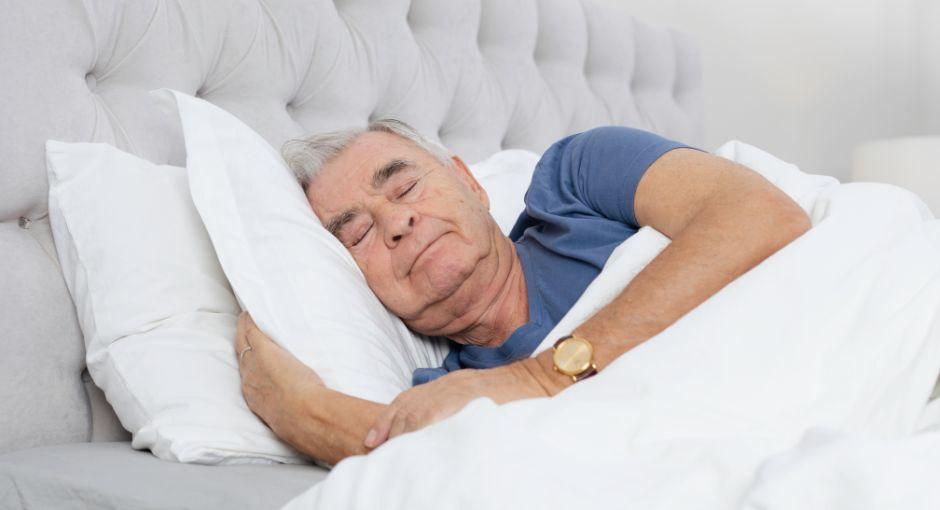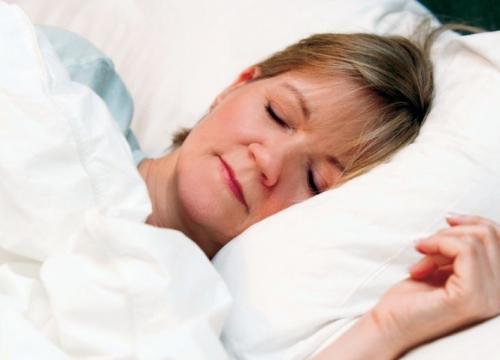Expert Tips on How to Get Good Sleep with Parkinson's

Sleep recharges our brains and bodies, while boosting mental wellness. People living with Parkinson’s disease (PD) need even more time to reset and restore. Discover how Parkinson’s symptoms, medications or other health problems can impact your sleep, and what you can do to maximize slumber.
This article is based on Trouble with Zzz's: Sleep Challenges with Parkinson's, a Parkinson’s Foundation Expert Briefing webinar presented Aleksandar Videnovic, MD, MSc, associate professor of neurology at Harvard Medical School and director for the Massachusetts General Hospital Division of Sleep Medicine and Program on Sleep, Circadian Biology and Neurodegeneration.
Aging, PD and Trouble with Sleep
As people age, it may be harder to fall asleep and waking up at night can be more frequent. Parkinson’s can further disrupt restorative sleep. As many as 80-90% of people with Parkinson’s can experience a sleep problem during the course of the disease.
Parkinson’s-related brain changes upset the circadian system, sometimes called the body’s internal clock. PD also impacts sleep drive — the growing sensation as day turns to night of the need to sleep. Other elements of PD that can disrupt slumber include:
- Parkinson's symptoms, such as tremor or PD-related pain, may emerge overnight as medications wear off. Other symptoms include akinesia (difficulty moving or inability to move), rigidity, dyskinesia (erratic, involuntary movement) and more.
- Medications used to treat PD can interfere with sleep. Others can make it harder to stay alert during the day.
- Depression and anxiety are extremely common PD symptoms. These and other symptoms, such as hallucinations, can keep a person awake at night.
- Changes to the autonomic system, the body’s network for regulating jobs like breathing and blood pressure, impact sleep. Nocturia — excessive nighttime urination — can be common in PD.
Sleep disorders can be exhausting for a person with Parkinson’s, as well as their bed partner. These can include:
- Obstructive sleep apnea and other sleep-disordered breathing can obstruct the airway repeatedly during sleep, resulting in coughing, choking and frequent waking. People with sleep-disordered breathing experience microarousals, waking up to 60 times hourly, without recognizing it. Sleep apnea affects up to 10% of the population, impacting people without Parkinson’s and those with PD with the same frequency.
- Excessive daytime sleepiness (EDS) may make it difficult to stay awake during daylight hours or cause sudden daytime sleep. PD brain changes and symptoms, medication regimens, co-existent sleep disorders and age-related physical changes can all cause EDS. Up to 16% or more of people with PD may experience poor daytime alertness. Some may be unaware of how EDS affects them. A trusted companion can offer honest input. Sometimes, sleep attacks can come on without any warning, significantly impacting a person’s ability to drive safely.
- Restless legs syndrome (RLS), an uncomfortable feeling in the legs or feet and irresistible need to move, can impact some people even prior to a PD diagnosis. However, not everyone with Parkinson’s experiences RLS, nor will most people who experience RLS go on to develop PD.
- Rapid eye movement (REM) sleep behavior disorder (RBD): People dream and experience muscle relaxation during REM stage of sleep. RBD can affect up to half of people with Parkinson’s, impacting muscle relaxation and causing people to act out their dreams — talking, yelling or moving about.
Like restless legs syndrome, RBD can begin long before a Parkinson’s diagnosis. Although not everyone who lives with RBD will develop Parkinson’s, their risk of developing PD or Dementia with Lewy Bodies — diagnosed when cognitive decline happens before or alongside motor symptoms — is significantly higher. This is meaningful for Parkinson’s research.
As potential therapies evolve to slow PD progression, there may be a window of opportunity for preventative intervention in people who experience REM sleep behavior disorder but have yet to develop a neurodegenerative disease.
Management Strategies for Fragmented Sleep
Talk to your healthcare provider about sleep issues, fatigue or daytime sleepiness. Your doctor may ask questions about your sleep history. A careful review of each or your medications will help your doctor determine whether a simple adjustment or addition might improve slumber:
- Long-acting levodopa or additional levodopa is sometimes prescribed for bedtime use.
- Catechol-O-methyl transferase (COMT) is an enzyme in the body. It can impact the effectiveness of levodopa. COMT inhibitors prolong the benefits of levodopa. These are primarily used for wearing off (changes in the ability to move between doses of levodopa) but are sometimes also prescribed with levodopa for use at night.
- People taking diuretics might be directed to use them earlier in the day. Likewise, limiting the use of PD medications selegiline and amantadine later in the day might improve insomnia.
- Anticholinergic medications are sometimes used for nocturia, however, cognitive slowing can be a side effect. These can also cause confusion and hallucinations and are not recommended in older people.
- Caffeine and some stimulant medications can promote alertness during the day.
Mental wellness: Talk to your doctor about symptoms of depression or other emotional challenges. Parkinson’s impacts areas of the brain that regulate mood, sleep, energy and more. Caring for mental health also benefits sleep.
Sleep disorders: If your doctor suspects a sleep disorder such as obstructed breathing, restless legs or RBD, you might be referred for a sleep study in a sleep clinic.
- Sleep apnea treatment may require a dental appliance or a continuous positive airway pressure (CPAP) machine that is worn when sleeping or napping.
- Dopamine agonists — medications that rouse areas of the brain motivated by dopamine — benzodiazepines, opioids and a class of medications known as calcium channel alpha-2 delta ligands, such a gabapentin, are sometimes used for restless legs syndrome. Dopamine-blocking, anticholinergic and antihistamine medications should be avoided for RLS.
- Your doctor may recommend melatonin or the medication clonazepam for RBD. While antidepressants may help with some aspects of insomnia, some can unmask or worsen RBD.
Tips to Improve Shut-eye
A healthy sleep routine — sometimes called sleep hygiene — is another key component to a good night’s rest. Try these small changes that can make a big difference:
- Exercise regularly (aim for early in the day) to improve sleep quality and overall function.
- Limit naps: a short snooze earlier in the day, of 30 minutes or less, is less likely to interfere with nighttime sleep.
- Avoid stimulants, such as caffeine, later in the day.
- Minimize your screen time before bed. Avoid screens entirely — including TV and mobile devices — in the bedroom.
- Go to sleep and rise at the same time, weekdays and weekends.
- Turn the lights out: light regulates the body’s clock, signaling that it is time to wake.
- Employ motion-detecting nightlights to safely guide you to the bathroom.
- Sleep in a wider bed that is lower to ground. This can minimize injuries and lessen the impact in case of an accidental fall.
- Consider a bedside rail to prevent falls; a bedside commode can also be helpful for people who have difficulty getting to the toilet at night.
- Use satin or silk sheets or pajamas to make it easier to turn in bed.
Adequate hydration can improve PD symptoms, boosting low blood pressure and easing constipation. However, drinking liquids too close to bedtime can cause frequent nighttime urination. Minimize beverages a few hours before bed.
Research
Light hitting the eyes is one of the biggest environmental factors regulating the circadian system. The timing of meals, exercise, naps and rest also influences our body clock. In turn, this timer regulates our mood, behavior, immune response and more. Researchers are exploring ways to improving circadian system function in PD.
Light therapy shows great promise as a noninvasive, widely available, nonpharmacological treatment to ease non-movement symptoms of Parkinson’s, including fatigue, sleep issues and mood changes.
In a 2017 JAMA Neurology journal study, Videnovic et al. found that exposure to bright light (10,000 lux) or dim-red light (less than 300 lux) — twice daily in one-hour sessions over two weeks — improved daytime alertness and sleep quality.
Those findings were carried over into the recently completed ENLITE PD trial conducted at 25 sites across North America. The study analyzes the effect of daily light therapy on PD symptoms, including sleep. At the time of this Expert Briefing, the study’s authors were preparing to submit their findings for publication, with the aim of conducting a phase III clinical trial.
Learn More
To learn more about Parkinson’s and sleep explore these resources:
Related Materials
Related Blog Posts

Sleep and Parkinson’s: Non-Motor Quality of Life

7 Tips for Better Sleep
